Published June 2021 | Updated March 2025
Seagrass rugs and carpet are darlings of the design world because they introduce a natural element into design landscapes and play well with a range of both timeless and on-trend interior styles. Maybe you are considering buying a seagrass rug or installing seagrass wall-to-wall and have questions, like: What are the pros and cons of seagrass flooring? Will a seagrass rug match my style? Where can I buy a seagrass rug? (Hint: here!) Can I use a seagrass rug outdoors?This comprehensive guide answers these most common seagrass questions and more, plus provides a bit of design inspiration.
What is seagrass?
This popular natural fiber material is made from seagrass, a perennial plant that grows in low-lying meadows of the Asia-Pacific region. These grass-like leaves are durable, and when woven together create the texturally rich rugs and carpet that designers and homeowners love.
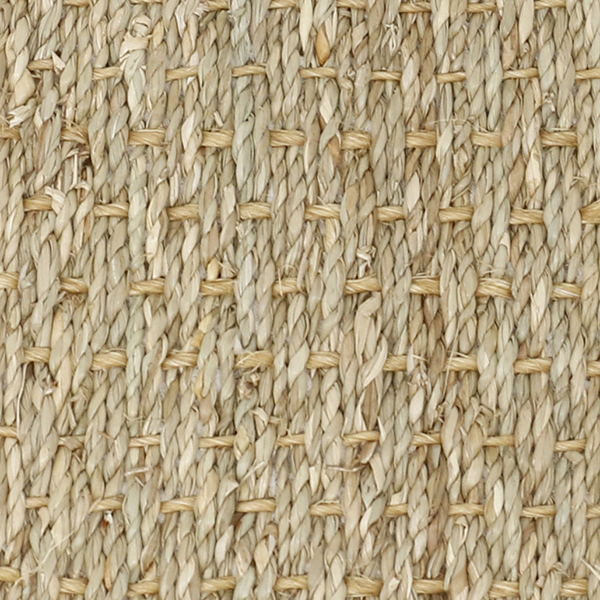
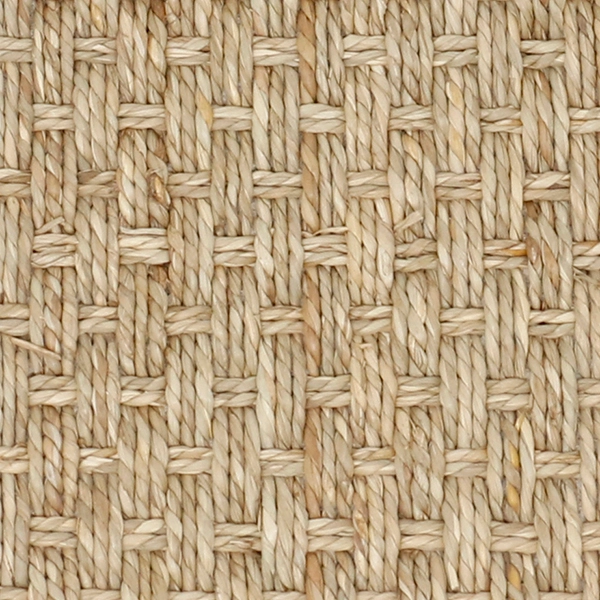
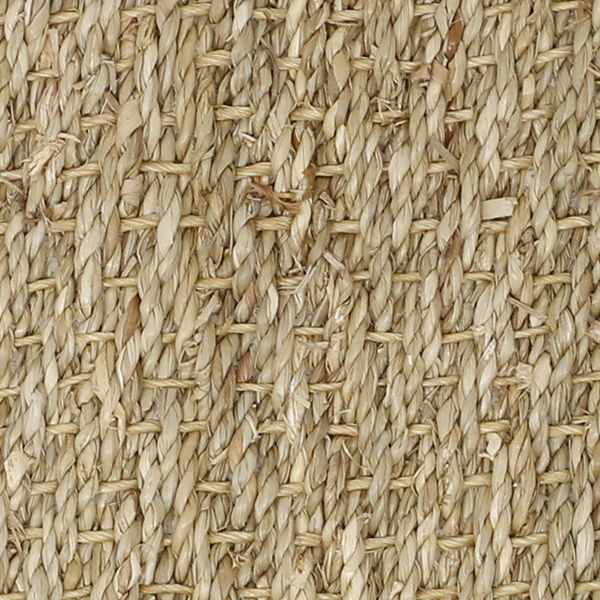
Is a seagrass rug right for me?
There are many things to consider when choosing floor coverings for our homes, including not only what aesthetically delights us, but what will work with our lifestyle. Bustling households, homes with pets, and interior design styles are just a few things to take into consideration.
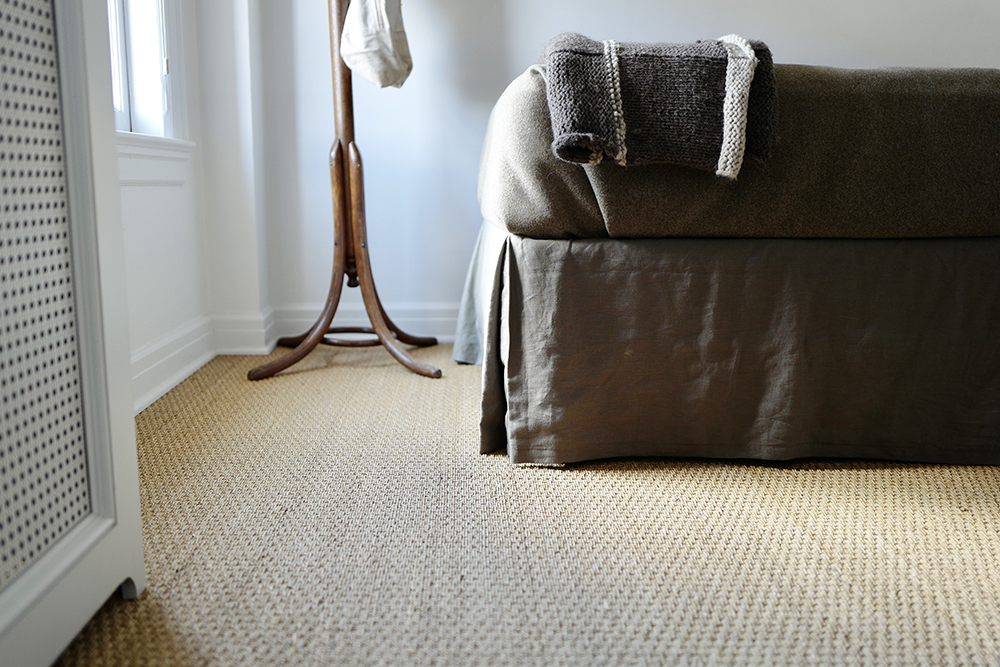
Are seagrass rugs durable?
The seagrass plant is a hardy water plant with non-porous fibers that make it an ideal material for everything from placemats to rugs. You might be familiar with seagrass matting or square rugs, where squares of woven seagrass are sewn together to create larger rugs. Seagrass mats are loosely woven, unstable and deteriorate quickly. This is not the kind of seagrass floor covering that we sell. At Curran and sisalcarpet.com, we sell high-quality, expertly woven seagrass rugs and carpets that have structural integrity and are designed to last.
Seagrass material is versatile and durable. You can install seagrass carpet wall-to-wall in a living room or bedroom, or create a custom seagrass runner rug for a busy hallway or foyer. Because seagrass is non-absorbent, seagrass is also an option for dining room and kitchen area rugs.

Is seagrass a pet-friendly material?
The waxy coating and non-porous nature of seagrass fibers make seagrass resistant to staining—an ideal attribute if you have pets! This fiber is also static-free and does not attract dirt or dust, so it contributes to a low-allergen environment. Liquid spills are easily wiped up and residual soil does not embed into weave fibers. Nonetheless, you should always act quickly to soak up the liquid or remove the accident.
Frequent vacuuming of any rug or carpet is an on-going chore if you have pets and want to keep hair and fur off the bottom of your socks. A seagrass rug is no different. Just be sure that your vacuum has a strong brush-suction so that dirt and dust particles don’t become long-term residents in your rug.
Can you use a seagrass rug outside or as a porch rug?
We do not recommend using seagrass rugs outdoors. The backing deteriorates and there is a high chance of mildew and dirt to build up. However, if you have a covered porch or patio, a seagrass area rug that can be brought indoors and dried out regularly would be a nice addition.
If you want to pass on the hassle, a synthetic outdoor rug is just what you need. Shop our collection of outdoor rugs to find a stylish selection of rugs designed to live outside.
Will a seagrass rug match my style?
Many designers think of the floor as the “fifth wall.” Together with the lighting, wall color, furniture and gallery-worthy art groupings, a perfect floor covering brings the whole vision into focus. Stylistic versatility is a hallmark of seagrass rugs and carpet. Seagrass’ color is neutral and presents the perfect template to build your unique look.
A seagrass rug blends beautifully with soothing, monochromatic interiors or can act as a counterbalance to colorful, energetic spaces. Boho chic design styles are full of color-drenched textiles grounded with natural elements. Our Calypso is a perfect complement in a boho chic living room. Or, if your style tends toward traditional, our Cyprus seagrass weave brings casual sophistication to living rooms and dining rooms. Organic modern decors, with their clean aesthetics and hints of nature, are a perfect fit for seagrass rugs.
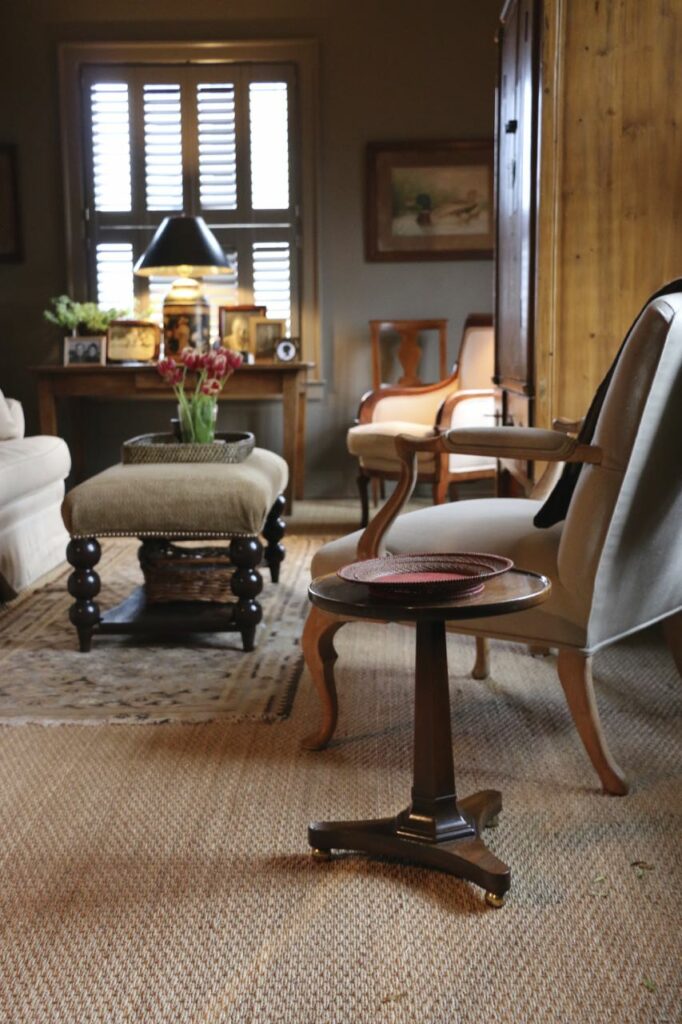
For custom area rugs, you can further define your style with a cloth border. Linen, leather, or cotton are just some of the cloth borders available to complete the look. Choose a contrasting color, like black or a nautical blue, to connect the color themes in your home, or go for a matching hue or a serged edge that won’t compete for attention. Check out Biscayne to see a serged edge and both a contrasting and matching cloth border.
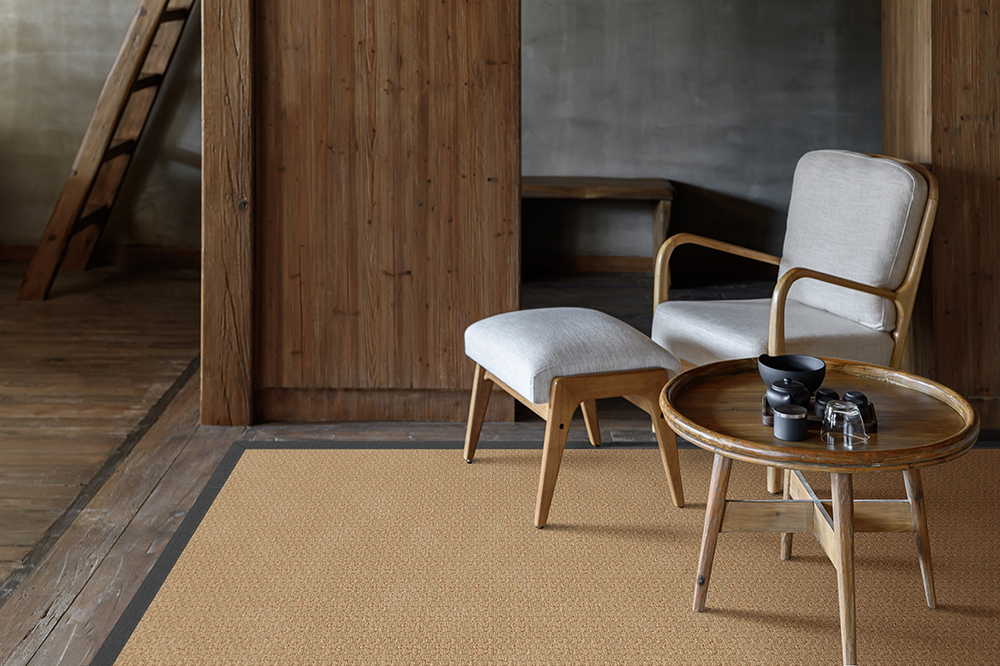
Seagrass is very popular installed wall-to-wall. Its flat weave and natural color is a perfect canvas. Layering another rug, like a kilim, dhurrie or other low profile wool adds warmth to the room. For a professional finish when installed wall-to-wall, add base trim or a quarter round trim around the edges. Not only will this secure the rug and help keep it from unraveling, it provides an elegant frame. Magellan showcases a professionally installed seagrass in a home office, with pristine base trim.
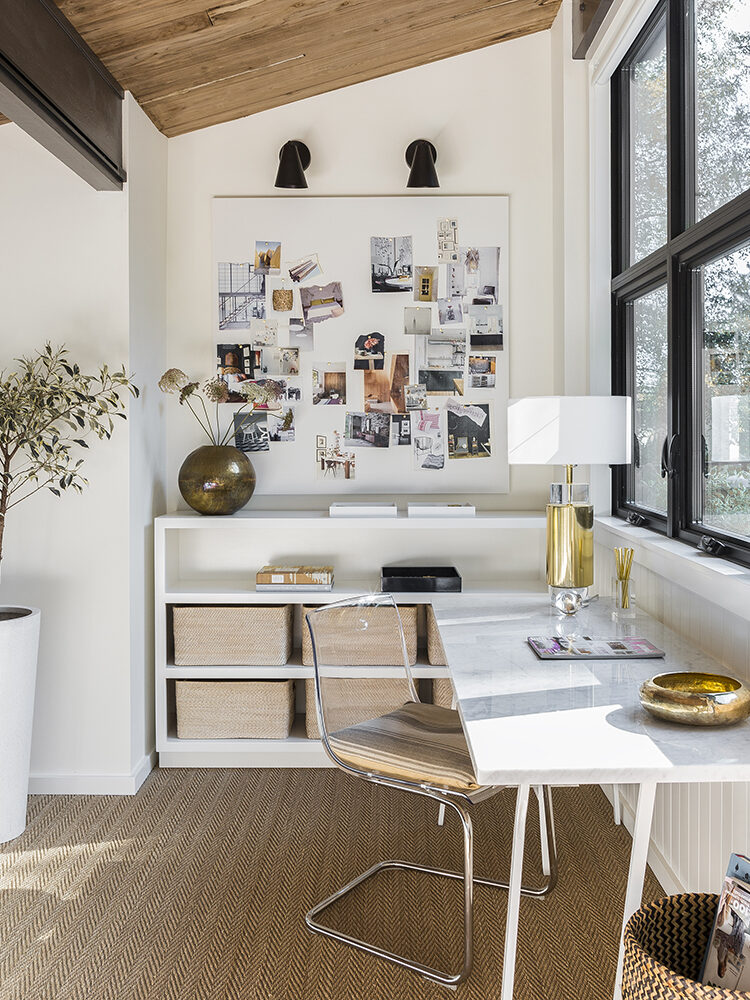
photo courtesy of Haris Kenjar
Pro Tip: Broadloom wall-to-wall seagrass and other natural fiber carpets shrink once they are unrolled and exposed to the elements. Seagrass can shrink 2”-3” on the sides, so if you are installing seagrass wall-to-wall, be sure that you allow the material to acclimate at least 24 hours before installation.
How much does seagrass carpet cost?
Compared to the most common natural fiber rugs available – sisal or seagrass or jute – a seagrass rug is less expensive. This is good news if you want to cover a large room or space with this neutral foundation. If cared for properly, a seagrass rug or carpet can last for years, also saving you money.

Why Designers Love Seagrass Rugs
Seagrass rugs are a versatile design element that have long been a staple in both stately homes and humble abodes. Sir Evelyn de Rothschild’s beautiful home on Martha’s Vineyard highlights wall-to-wall seagrass carpet in the common room. Seagrass blends with the calming hues of coastal cottages and can warm up modern or contemporary styles. The beauty of a seagrass natural fiber rug is the neutral landscape it presents, ready and waiting for your final edits or additions.
What color is seagrass?
Fresh seagrass has a greenish hue that mellows into a warm tan or khaki as it ages. Seagrass leaves are non-porous, so seagrass material cannot be dyed a different color. This makes your seagrass carpet a blank canvas: add a splash of color by layering decorative rugs on top or choose furnishings in bold hues or patterns that won’t contrast with your flooring.
Pro Tip: Direct sunlight over extended periods of time can alter the color of your seagrass rug. Use window shades or rotate your rug to help even out the natural color changes.
Are seagrass rugs soft?
A seagrass rug can’t beat the coziness of wool, but it is softer than other natural fibers like sisal and coir and is less dusty than jute. Natural fiber rugs are flat-woven and the patterns as well as the fiber itself has texture. The basketweave structure in Cyprus adds texture, but the fibers are easier on the feet than sisal or coir. We suggest you order some seagrass swatches so you can get a feel for the texture underfoot.
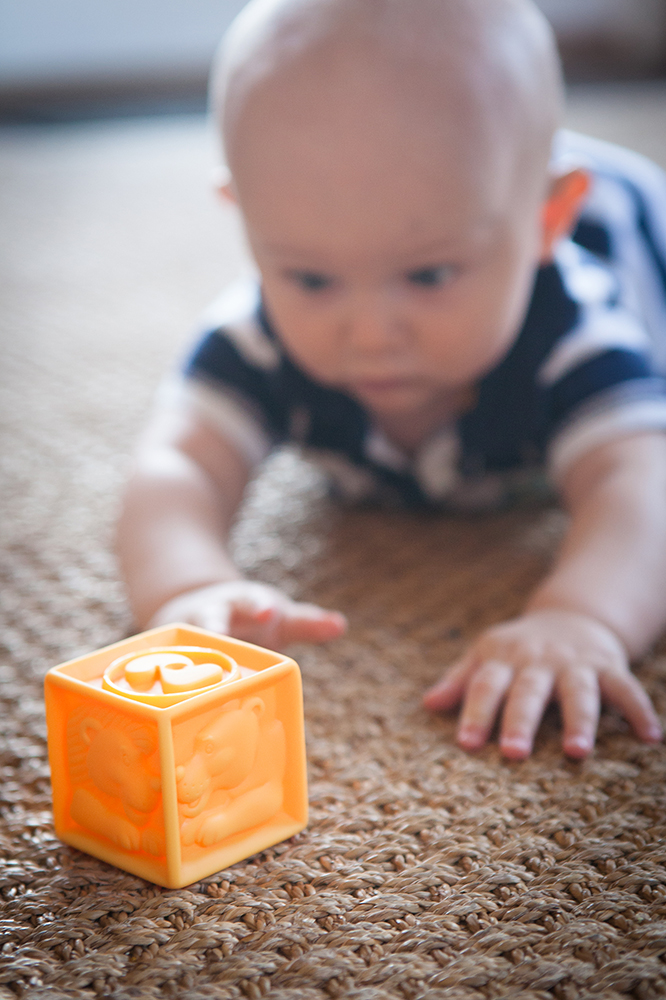
Can I create a custom seagrass stair runner or a round seagrass rug?
Yes, you can! At Curran and sisalcarpet.com, we let you decide the dimensions and finishings for your rug. A custom seagrass stair runner can have your choice of cloth borders, from cotton to faux leather, or a classic serged edge. Circular seagrass rugs are available in your specific size and come with a matching serged edge.
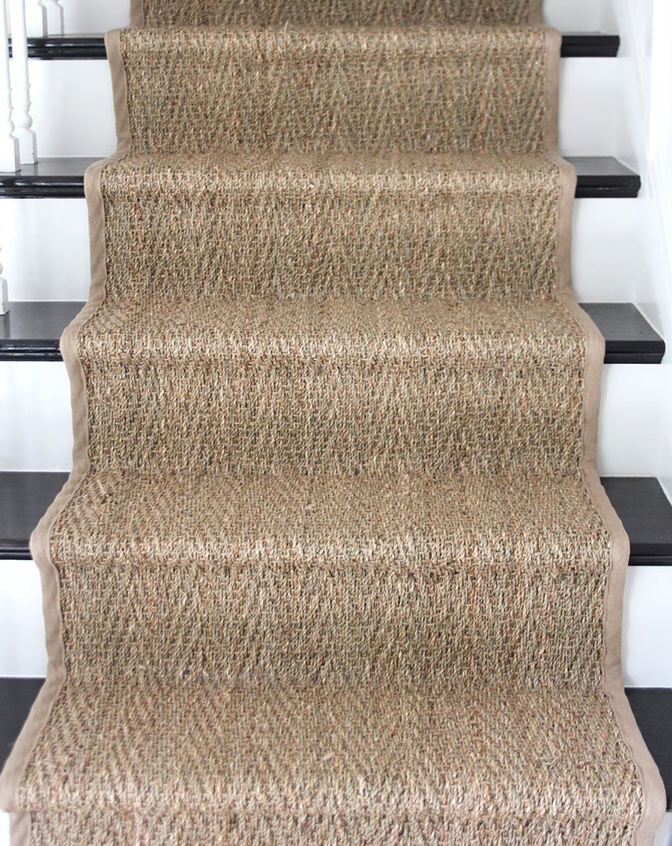
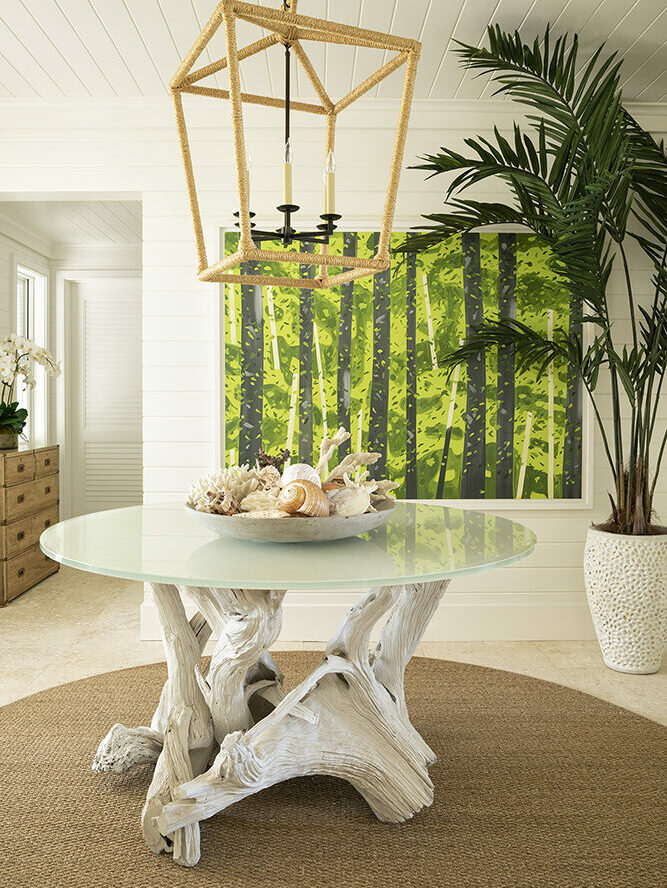
What are some alternatives to seagrass?
Seagrass isn’t right for everyone. Maybe you would like something with more pattern or color, or that is easier to maintain? Explore our collections of natural fiber rugs that showcase a variety of patterns, colors, and even stain-resistant sisals. If you like the look of sisal but want softness underfoot, our exclusive SynSisal® weaves give you classic sisal patterns and colorways with soft yarns and easy maintenance.
Seagrass vs. Sisal vs. Jute?
Take a deeper dive into the differences between natural fiber flooring materials
Seagrass Cleaning & Care
How do you clean seagrass carpet?
Seagrass rugs and carpet require the same maintenance that most floor coverings do: vacuum regularly and attend to any spills right away. We recommend that you vacuum one to three times per week, depending on the activity level in your home.
For best results, take multiple passes over heavily trafficked areas with a quality vacuum. Since seagrass has an uneven texture, you should change direction each time you take a pass to better remove fine dust or dirt particles. If left in your carpet, these fine dirt particles can turn into a bad stain if they come into contact with liquid. Dirt + water = mud!
The good news is that the non-porous nature and waxy coating of seagrass makes it more resistant to staining. For added protection, apply Sisal-Guard, a spray-on sealant for natural fiber rugs and carpet that acts as a stain barrier. Just remember to act quickly to soak up the liquid or remove the spill.
All of our weaves come with guidelines for care and maintenance that are accessible under the Care tab on each weave page. More detailed cleaning tips and a spot removal chart for natural fiber rugs can be found on our Care For Natural Fiber Rugs page.
Pro Tip: a tough and durable walk-off mat upon entry to your home will capture most dirt, and a “no shoes inside” policy will keep remaining dirt and dust from wandering further into your house.

Does seagrass mold?
Seagrass’s grass-like fibers are susceptible to mold and mildew growth with prolonged exposure to humidity or moisture. To avoid this undesirable outcome, make sure that you only install wall-to-wall in a dry, climate-controlled setting. Those in humid environments will need proper air conditioning to keep mold at bay.
Seagrass needs to breath, so don’t install it in a basement or on a concrete slab. If you chose an area rug, routinely air it out. And don’t cover seagrass with plastic mats (think clear mats that office chairs roll on) as this traps moisture and can lead to mold and mildew growth.
If you do end up with mold, we recommend treating the area with a mild bleach solution (one part bleach to six parts water). Always test the solution on an inconspicuous area of your rug (not on the binding)—you do not want it to bleach the fibers. Once deemed safe, lightly apply the solution to the area with a soft brush. Let sit for five to ten minutes and then rub with a clean cloth. Repeat if necessary. Be sure to dry the rug thoroughly. Our Care Guides offer more detailed instructions.
Do seagrass rugs have an earthy smell?
A straw- or hay-like smell is common in new seagrass products. Many seagrass rug owners report that this odor dissipates within a few weeks and is replaced by a more subtle smell that many find refreshing. Humidity can increase the smell, so expect a strong scent if you are returning to your home or vacation hideaway that has been sealed up for weeks or months.
Pro Tip: Be sure you enjoy that earthy smell before making a large purchase! Order seagrass samples and test your smell-response. But remember, the intense natural smell fades away over time.

Pro Tip: The adhesives used in wall-to-wall seagrass installation can contribute to a strong smell. For those who are sensitive to odors, ask your installer to use an adhesive that has little to no smell.
Which backing should I choose for my seagrass rug or carpet – natural latex or urethane?
Our seagrass collection offers natural latex or urethane backing. The latex backing is natural—an obvious benefit—but has been known to stick to hardwood or other hard surface floors. We recommend that you use a separate rug pad that has been approved for use on hardwood floors to provide a layer of protection. Our urethane-backed seagrass rugs are extra durable and have more cushioning.
You may order swatch samples of both seagrasses to help you make a decision by selecting from our seagrass collection. For example, ordering swatches of both Biscayne and Biscayne Urethane will help you see and feel the difference.
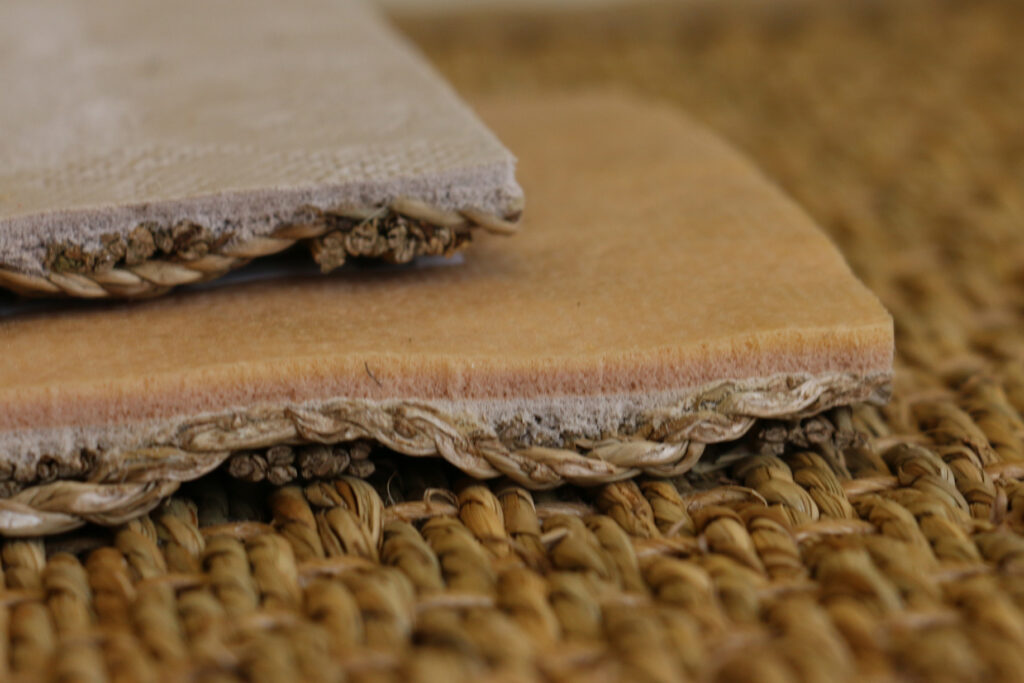
Our Final Words
Seagrass deserves its place as a favorite among designers and homeowners – it is the ultimate design chameleon that is also durable and affordable. A seagrass rug or carpet brings a touch of natural beauty to any space, whether it is a living room, bedroom, hallway, or office. We hope this blog post delivers answers to your questions about seagrass as a flooring option. If you have any additional questions, please contact our knowledgeable sales team. We are here for you.


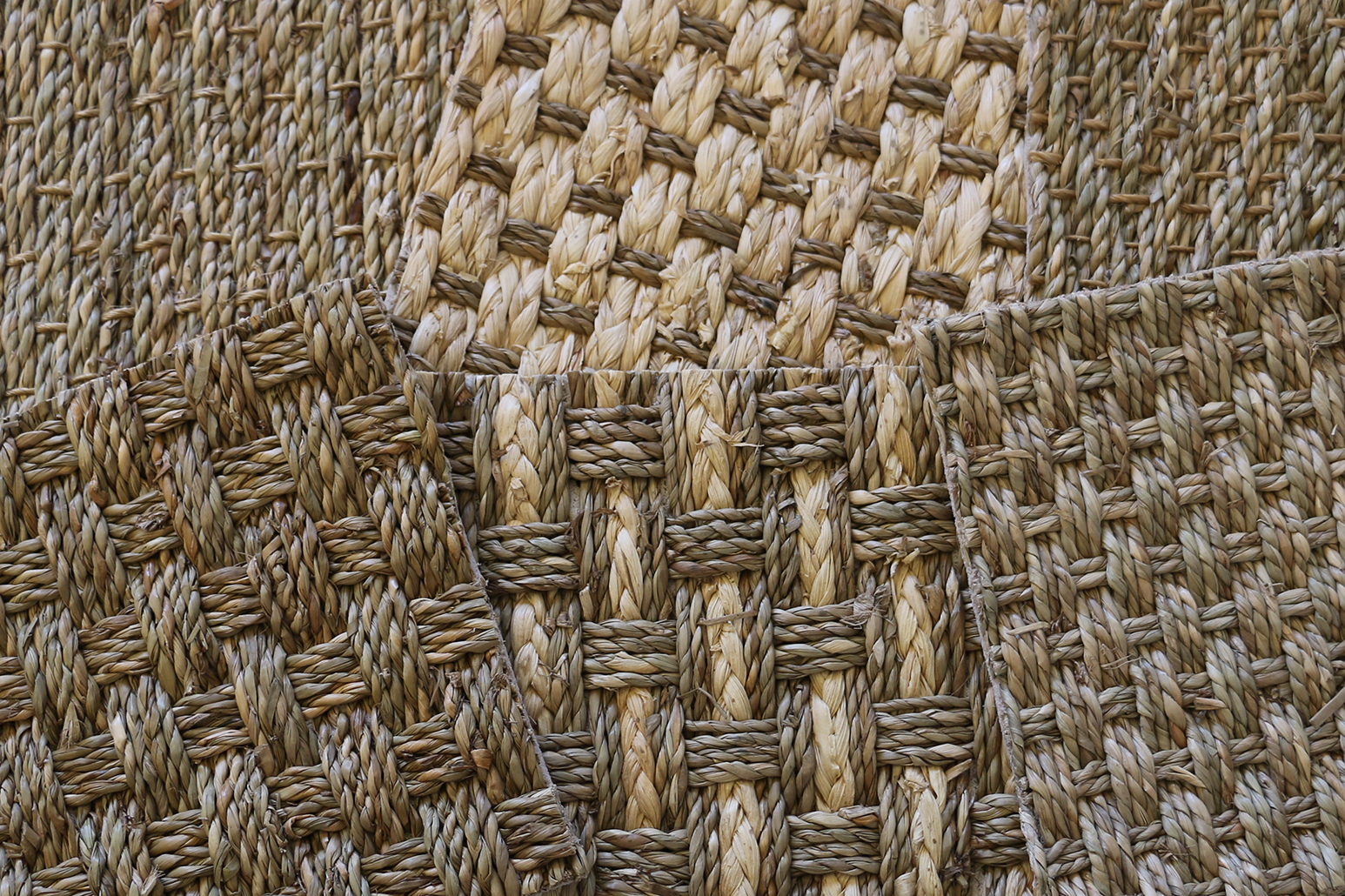
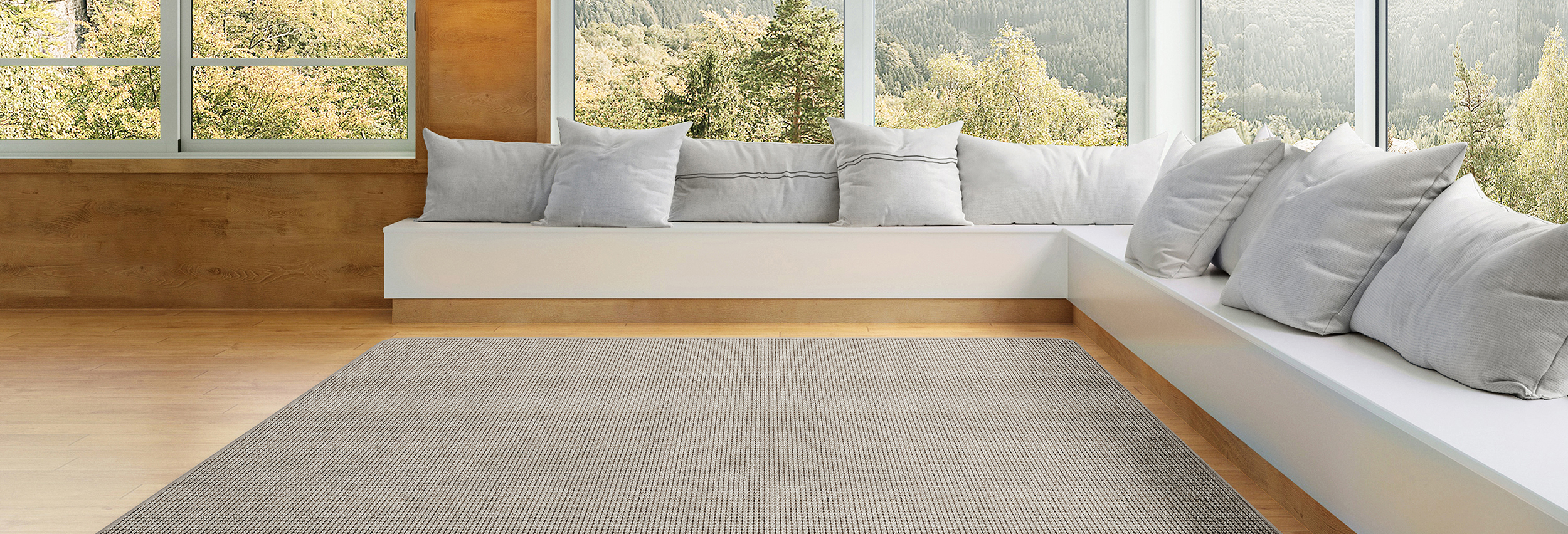
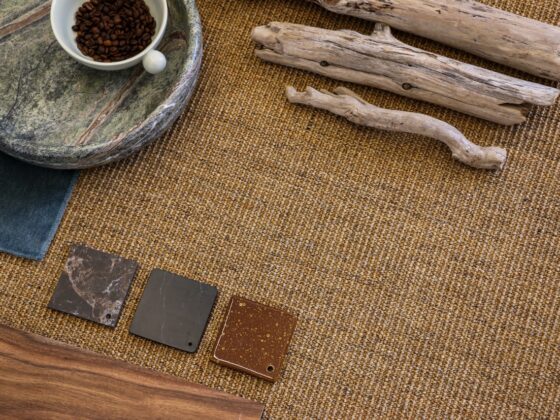
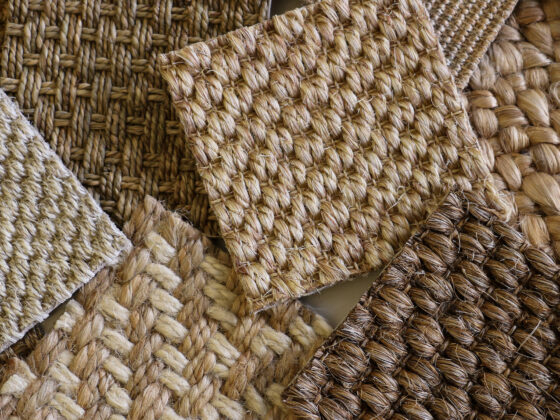
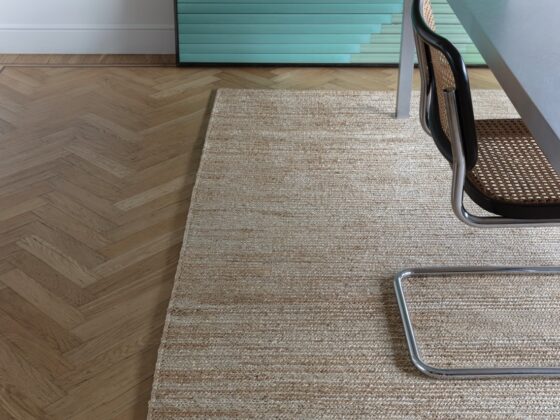

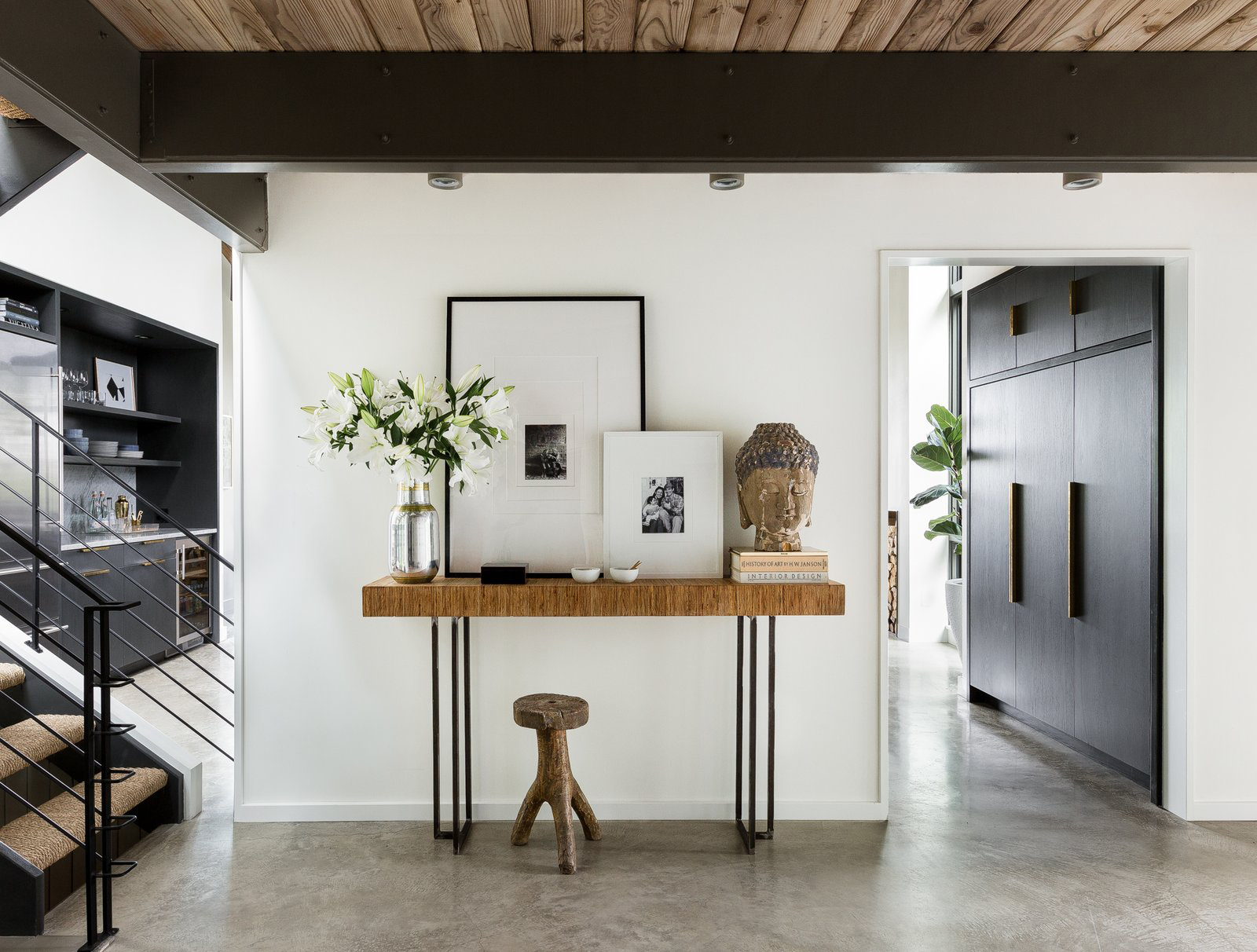
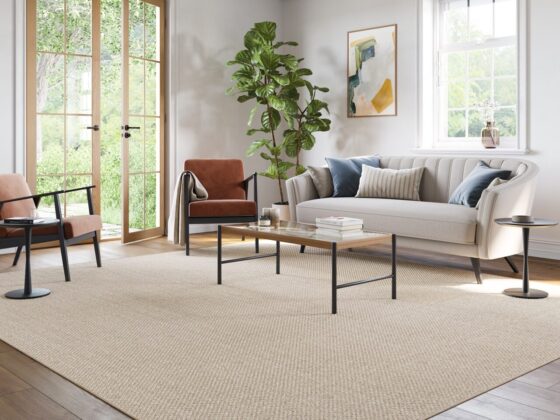
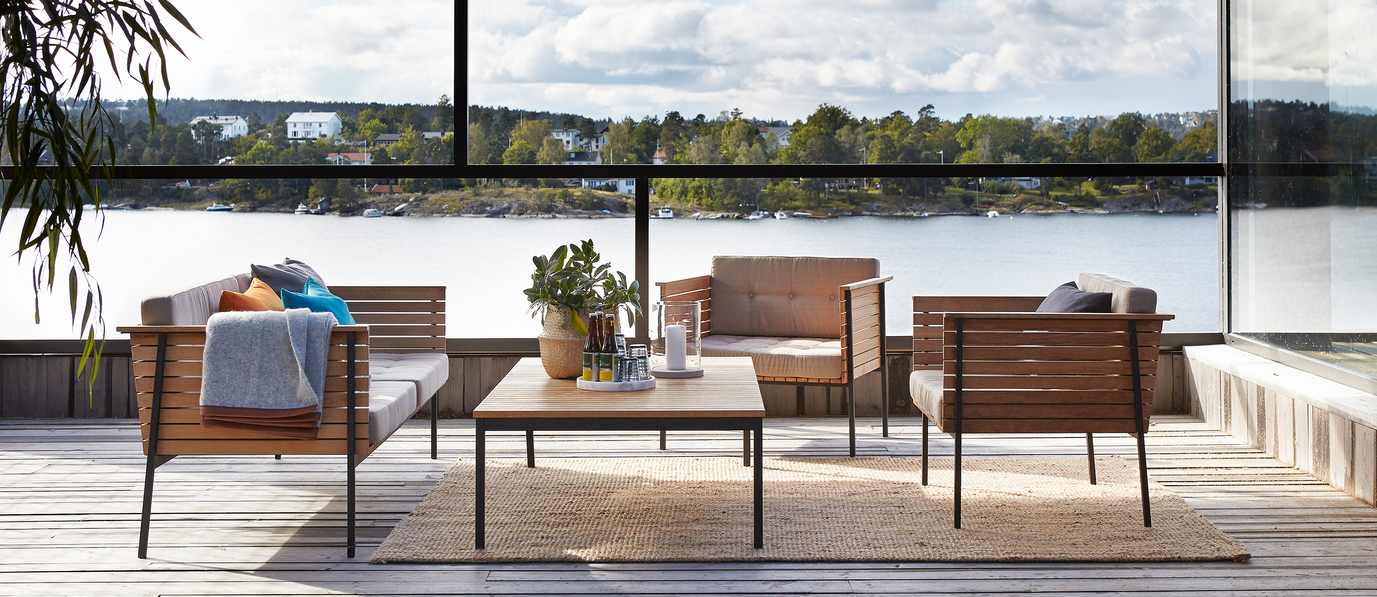
4 comments
Is it possible to remove the ridges in a sea grass rug left rolled too long? I’ve tried several things which have not done the trick and now am wondering if I could steam the ridges (flatten them out). I assume I would have to place towels under the rug to maintain the wood flooring underneath and also probably place towels over the top of the sea grass as well before using the steamer.
Does this sound do-able or will I surely ruin the rug? Do you have any other suggestions? I have taped the edges down and lived with the rug that way for two years but without noticing the ridges are diminished.
I would appreciate any comments or help you can offer.
Hi Maria,
Thank you for posting a question about your seagrass rug. As it happens, we just published today a post with tips on how to flatten a rug. Here is the link to How to Flatten a Rug if you would like to check it out.
As for steaming the rug, your idea could work but I would worry more about your wood floors underneath. If you are going to steam it, use a moisture proof barrier between the rug and your wood floors. The steam and the heat could damage your flooring. Also, if possible, back rolling the rug and letting it rest like that for a few days might help.
Feel free to contact our customer service team — they have years of expert experience and would be happy to help you further.
Best,
Christy
I have a seagrass runner and my dog chewed at one of the steps. I have a big hole now and don’t know how to repair it. Do you have any suggestions?
Hi Carrie,
I would suggest contacting your installer to assess the situation and see if the spot your dog chewed can be replaced with the same fabric you purchased.
Best,
Patrick